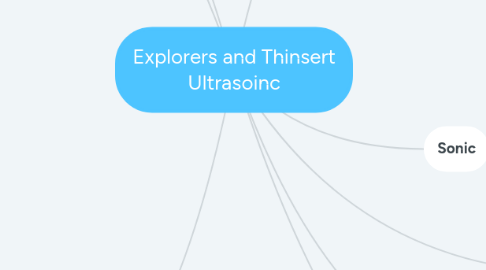
1. Design Characteristics
1.1. Flexible wire like working end
1.2. Circular in cross section
1.3. Paired or unpaired working end
1.4. Working end is 1-2 mm in length
1.5. Side of working end used NOT tip
2. Functions
2.1. Detect texture of tooth surfaces before, after, and during calculus removal
2.2. To determine completion of instrumentation
2.3. To detect carious lesions
2.4. To evaluate dental anomalies and anatomic features
3. Explorers
3.1. Types Of Explorers
3.1.1. Shepherds Hook Explorer
3.1.1.1. Supragingival use
3.1.1.2. Circular in cross section
3.1.1.3. Function
3.1.1.3.1. Examination of restoration margins
3.1.1.3.2. Assess sealant retention
3.1.1.3.3. Examinations of dental caries
3.1.1.4. Point of explorer used on occlusal surfaces
3.1.1.5. Classification Number: #17
3.1.2. Orban Type Explorer
3.1.2.1. Tip bent 90 degree angle to terminal shank
3.1.2.2. Straight terminal shank
3.1.2.3. Function
3.1.2.3.1. Assess anterior roots
3.1.2.3.2. Asses facial and linguals of posterior teeth
3.1.2.3.3. Excellent for use on anterior teeth
3.1.2.4. Bent tip on back allows it to directed against the soft tissue at base of sulcus or pocket
3.1.2.5. Disadvantage: Straight shank makes it difficult to use on line angles, medial, and distal surfaces of posterior teeth
3.1.3. The 11/12 Explorer
3.1.3.1. Tip bent at a 90 degree angle to terminal shank
3.1.3.2. Long, complex shank design
3.1.3.3. Function
3.1.3.3.1. Used in anterior and posterior roots
3.1.3.3.2. Used for normal sulci, and deep pockets
3.1.3.4. Advantages
3.1.3.4.1. Smooth back tip
3.1.3.4.2. Complex shank excellent for all teeth
3.1.3.4.3. Can be used on any type of conditions in oral cavity
3.1.4. Straight Explorer
3.1.4.1. Has a pointed tip
3.1.4.2. Not recommended for sub gingival use
3.1.4.3. Supragingival use
3.1.4.4. Function
3.1.4.4.1. Examination of margins of restorations
3.1.4.4.2. Assess sealant retention
3.1.5. Pigtail/Cowhorn
3.1.5.1. Calculus detection of normal sulci/shallow pocket
3.1.5.2. Disadvantage: Curved lower shank
3.1.5.3. Circular in cross section
3.2. Technique
3.2.1. Working end wraps around facial surface when exploring anterior teeth
3.2.2. Tip in contact with tooth at all times
3.2.3. Short strokes
3.2.4. Relaxed modified pen grasp
3.2.5. Middle finger is to be relaxed at all times to feel vibration of shank for calculus detection
3.2.6. Lower shank facing distal when exploring posterior teeth
3.2.6.1. Lower shank is parallel to distal surface
3.2.6.2. Functional shank goes up and over tooth
4. Ultrasonic
4.1. Convert electrical energy
4.2. Magento
4.2.1. transfer energy to metal stacks
4.2.1.1. Both handpiece and working end must be irrigated
4.3. Piezo
4.3.1. Use electrical energy to activate crystals
4.3.1.1. Working end cooled with water
4.4. Family/Types
4.4.1. Standard tip
4.4.1.1. Supragingival deposit
4.4.1.2. Extrinsic stain removal
4.4.1.3. Moderate-Heavy deposit
4.4.2. Straight slim periodontal tips
4.4.2.1. Light-Moderate deposit
4.4.2.2. Plaque Biofilm removal
4.4.2.3. Low power setting
4.4.2.4. Below CEJ
4.4.3. Curved slim Periotips
4.4.3.1. Light-Moderate Calculus removal
4.4.3.2. Great access
4.4.3.2.1. Root concavities
4.4.3.2.2. Furcations
4.4.3.2.3. Plaque biofilm
5. Sonic
5.1. Convert air to pressure
6. Mechanism Of Action
6.1. Frequency
6.1.1. How many times working end vibrates per second
6.2. Amplitude
6.2.1. How far working end moves back and fourth
7. Cleaning Efficiency
7.1. Low frequency-Low amplitude
7.1.1. Fewer vibrations and shorter strokes is ideal for plaque biofilm removal
7.1.1.1. Many vibrations and longer strokes is ideal for removal of tenacious calculus deposits

